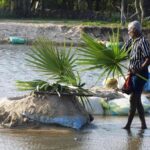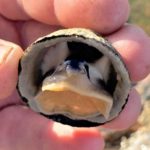Sea slugs of the taxonomic family Aplysiidae are commonly called ‘sea hares’, because when underwater, their rounded body shape and the long rhinophores on their heads resemble that of a sitting rabbit or hare. Unlike other sea slugs (nudibranchs), they have shells, which are reduced to a small plate hidden in their back. All sea hares excrete ink when feeling threatened.
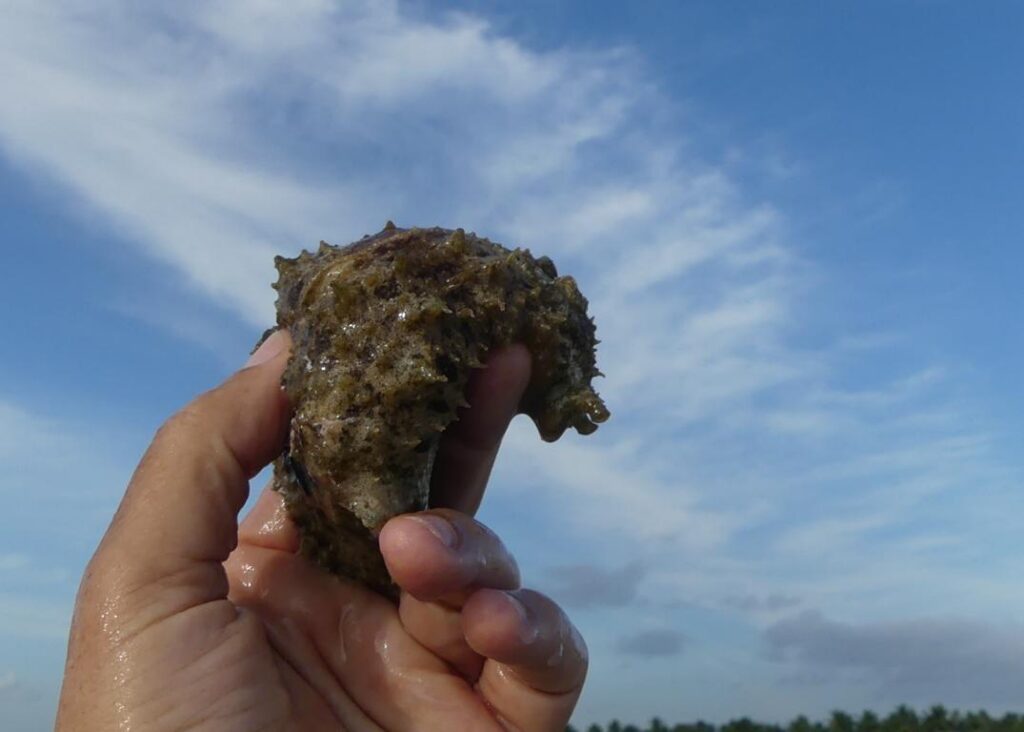
In the lagoons around the island of Zanzibar, we found the ‘Wedge sea hare’ (Dolabella auricularia). The local ladies collected this species when beachcombing in the intertidal flats for food.
Description of sea hares
The common name of ‘sea hare’ does not clearly define which animal we are talking about because the same common name is also used for the lumpfish (Cyclopterus lumpus) living in the northern Atlantic. In connection with this article, we are talking about sea slugs and not about lumpfish when we call it ‘sea hares.’

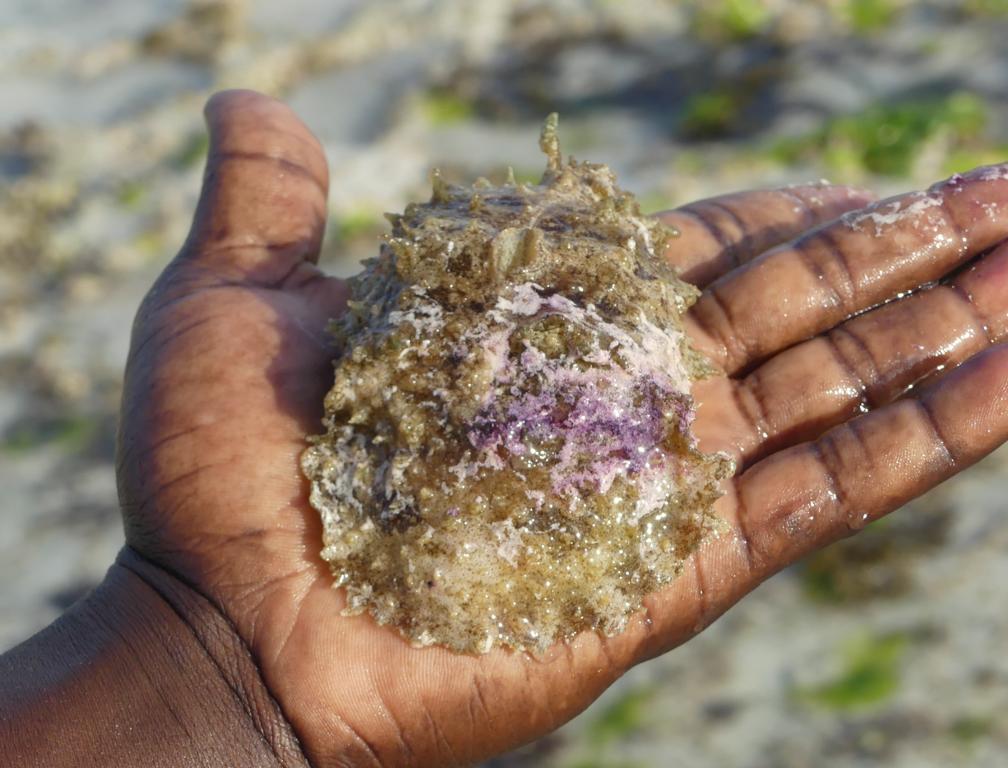
Sea hares are described in detail on web pages like this one here or that one. The species can be easily identified by its wedge-like shape when observed from above. Its hind side is built as a wide mantle with papillae on the edges. Its breathing siphons are located in the centerline of the backside. The front slit serves for inhaling, and the backslit for exhaling.
Distribution area and where to find them?
The Wedge sea hare is widely distributed in flat coastal areas of the Indian Ocean, Pacific, and Caribean.
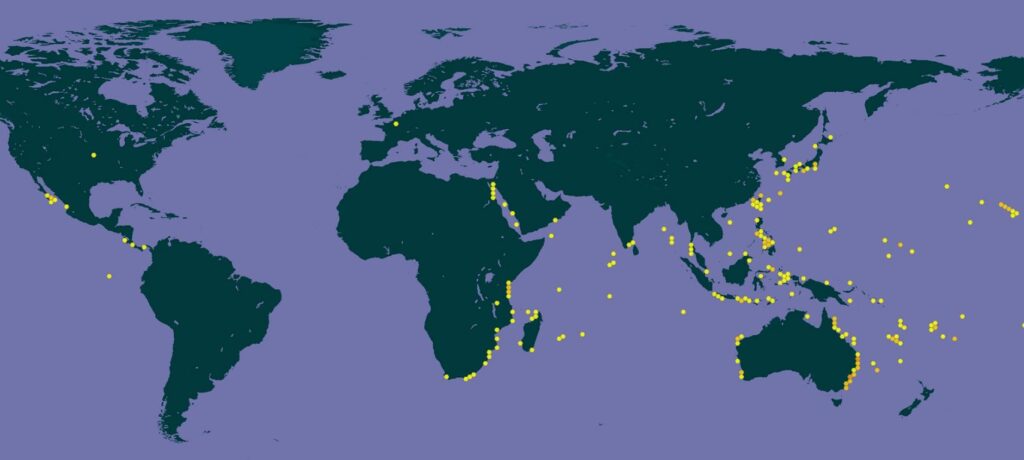
Distribution map of Dolabella auricularia; © GBIF, see here.
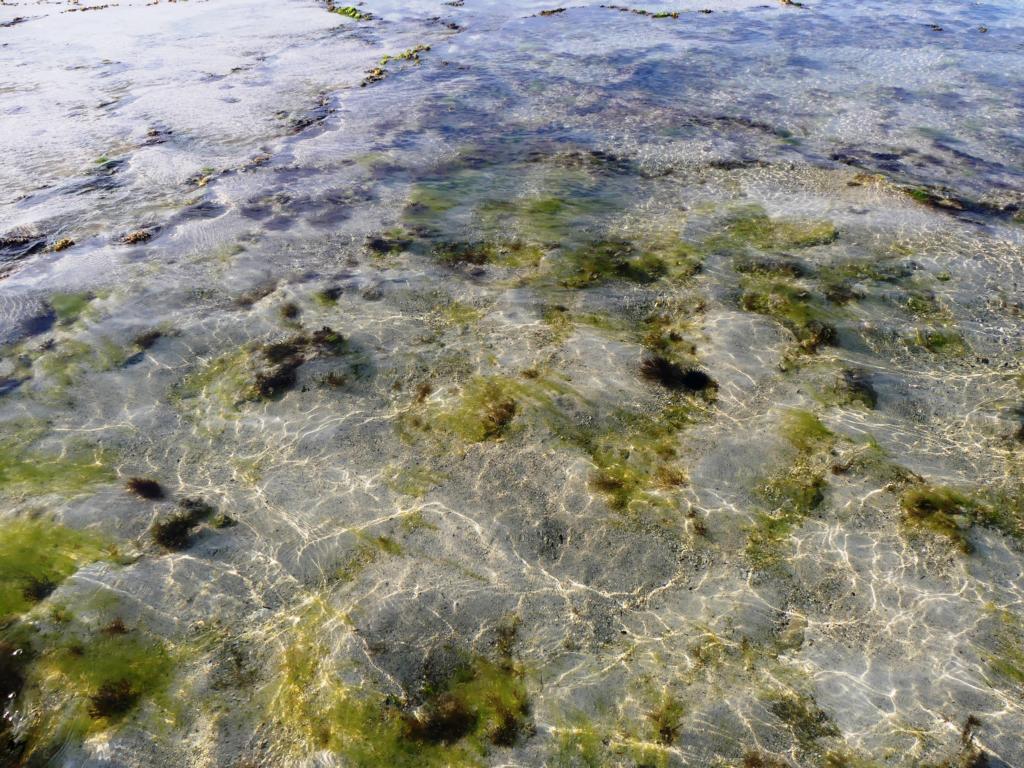
It is usually found in sheltered bays or lagoons. Dolabella auricularia prefers locations with grass beds on sand or mud, where it can graze various types of algae. The availability of red seaweed and other red algae is essential for wedge sea hares, as they extract color and chemicals for their ink from it. The species is also found in large intertidal rockpools and areas down to a water depth of 50 meters.
Although these sea slugs are very well camouflaged, beachcombers often find and collect them. No specific procedure is necessary to collect them, as they are pretty slow in their movements. The collectors just touch them with their stick before handling them so that they release their ink in the water—and not later in the collecting bucket.
Sea hare’s defense mechanism.
For defense, sea hares release a purple chemical, which they extract from red seaweed and algae. This ink is not transformed or further processed within their bodies but has the same composition as when rasped from the seaweed.
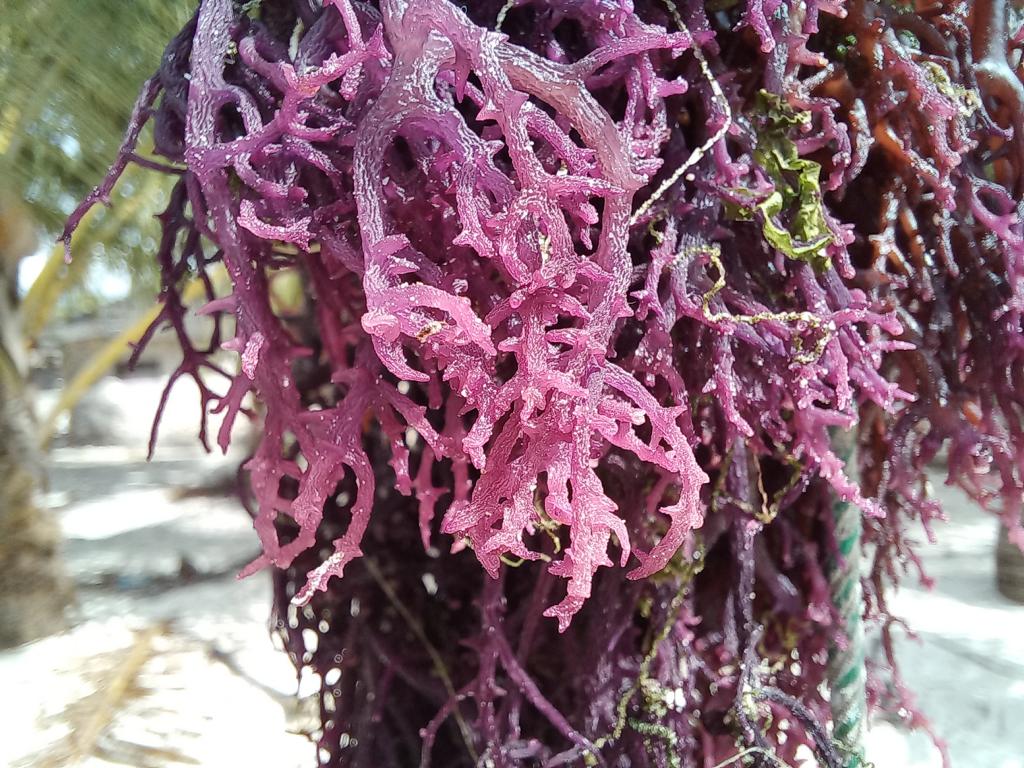
Red seaweed (Eucheuma denticulatum) from the same location as the sea hares (Dolabella auricularia) were found

Freshly released ink from a sea hare (Dolabella auricularia) with the color of red seaweed.
(Ruaza, 2022) reported that this deep purple ink is a rich source of toxic peptides and bioactive proteins. He writes: ‘In this study, the toxicity analysis for brine shrimp with LC50 value was 529.12 indicating them as moderately toxic. Sea hares extract compound was weakly cytotoxic towards human lung cancer and human oral epidermoid carcinoma. Sea hare extracts have a significant result on ichthyotoxicity against Oryzias latipes and insecticidal activity against the German cockroach Blatella germanica and mosquito larvae Anopheles gambiae.’
Based on the ink’s medical properties, the defense mechanism can be summarized as moderately toxic to small crustaceans, fish, and insects. As a side effect, the properties of this ink could be used to improve the effects of some kinds of human cancers.
Edibility of sea hares
Sea hares are collected at the intertidal flats around Zanzibar for human consumption. I helped gather some for a local lady but did not eat one myself. She says she cuts away the warty skin and all innards and keeps only the muscular foot for cooking. After boiling the foot muscle, she shaves off thin flakes of the muscle and adds them to a seafood salad. To my current knowledge, the egg strings are not collected in Zanzibar, but only the slug’s foot is eaten.
Sea hare eggs – either caviar or noodles.
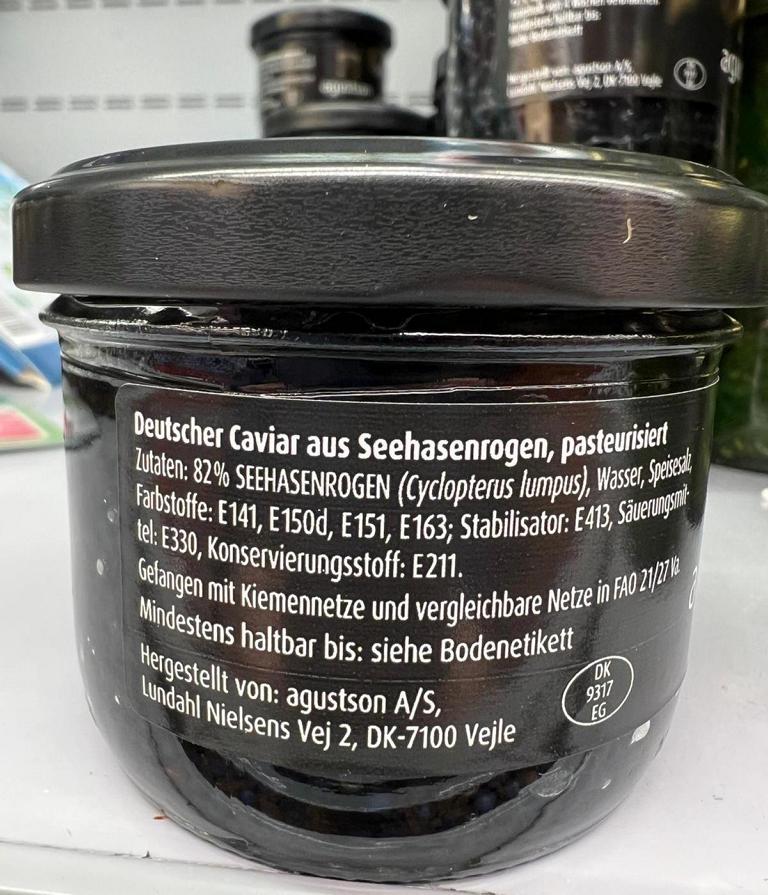
Sea hare eggs of the lumpfish (Cyclopterus lumpus) are widely sold in Europe under the name ‘False caviar,’ ‘German caviar,’ or similar names. It is lumpfish roe, which was dyed black.
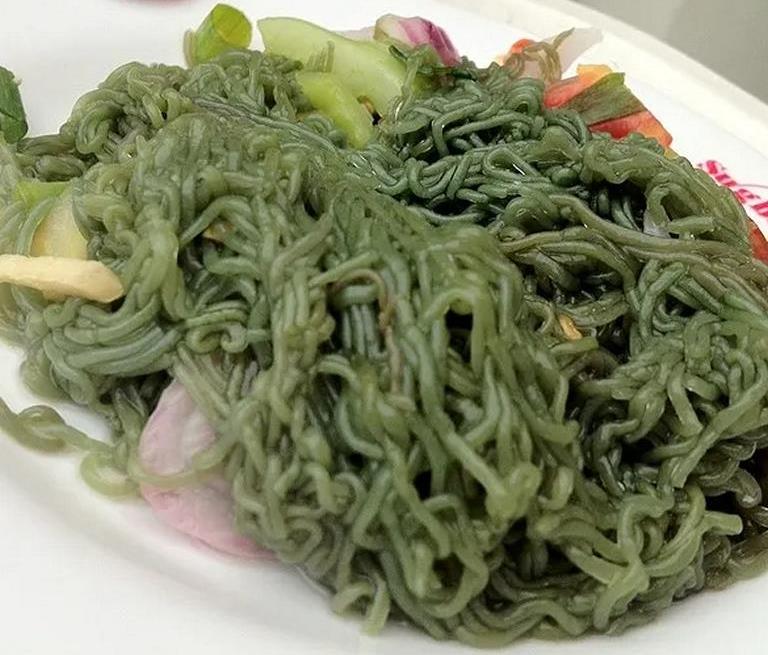
Egg strings of the Wedge sea hare. Picture © Pinoy Reads;
Sea hare eggs of the Wedge sea hare (Dolabella auricularia) appear like a clump of noodles at first sight. Individual eggs are not visible. These noodles have various colors. Depending on what the sea slug was eating before laying these strings of eggs, they can be colored in any shade between green, red, and yellow. In the Philippines, these noodles are also eaten raw or sold in seafood wet markets under the name ‘Lukot.’ An interesting description can be found here.
Lessons learned from sea hare slugs:
- The common English name of ‘sea hare’ belongs to a fish and a sea slug. Both are two completely different animals.
- The sea hare (Dolabella Auricularia) is collected in the lagoons of Zanzibar for food.
- Only the muscular foot and none of the skin or internal organs are eaten.
- Sea hare eggs of the lumpfish are eaten as a false caviar in Europe.
- The egg strings of the sea hare slugs are eaten raw or cooked in the Philippines.
.



